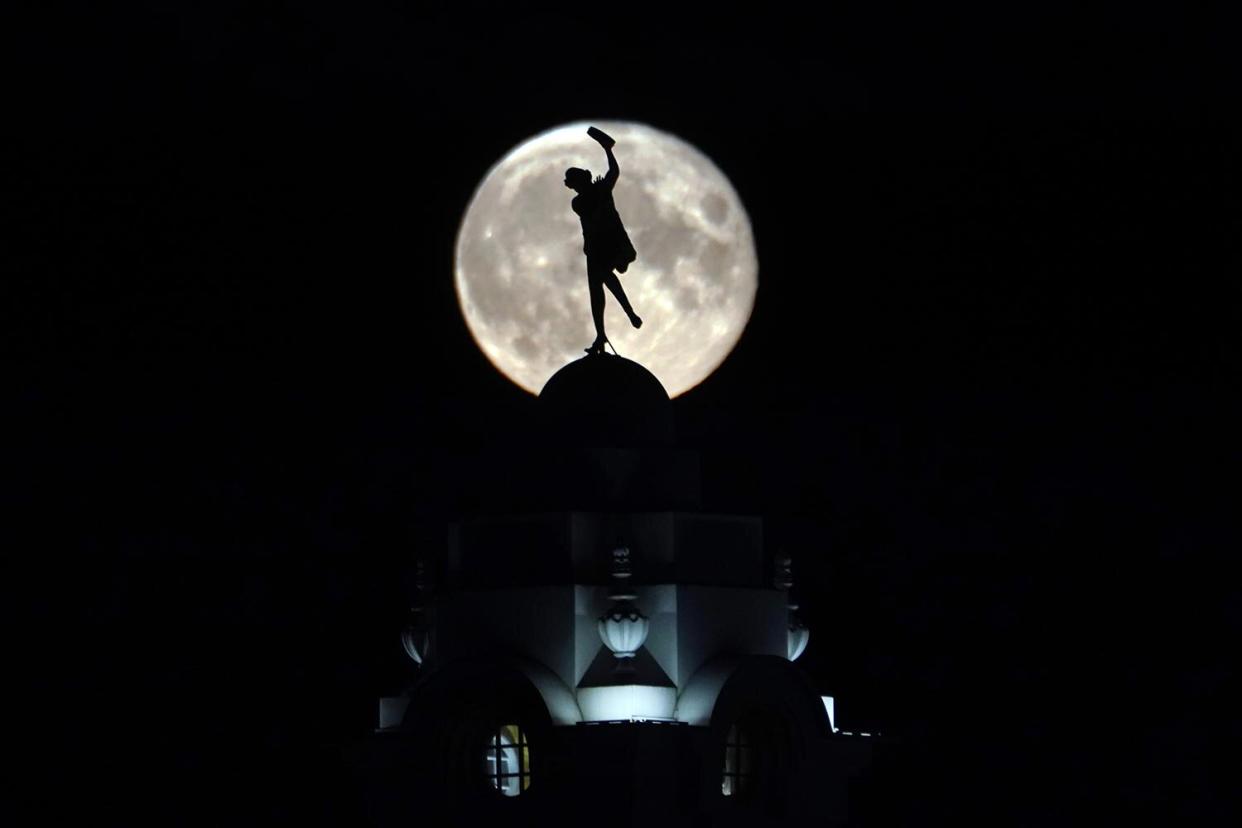Here's When You Can See the Stunning July Full Buck Moon for Yourself

Owen Humphreys/PA Images via Getty The Buck Moon rises in England
Sky gazers, get ready — the next full moon is almost here.
The Buck Moon will be visible on Friday night, with peak illumination coming at 10:37 p.m. EDT, according to NASA. It'll appear full for about three days around its peak, from Thursday night through Saturday morning.
Like the others, the name of July's full moon comes from Native Americans, who first published the names in the Maine Farmer's Almanac in the 1930s.
"According to this almanac, as the full moon in July – the Algonquin tribes in what is now the northeastern United States called this full moon the Buck Moon," NASA wrote in a release. "Early summer is normally when the new antlers of buck deer push out of their foreheads in coatings of velvety fur. They also called this the Thunder Moon because of early summer's frequent thunderstorms."
RELATED VIDEO: 7-Year-Old Is an Aspiring Astronaut
The moon does have other names in other places — in Europe, it's called the Hay Moon, or sometimes the Mead Moon, while it's referred to as the Guru Full Moon, or Guru Purnima, for Hindus, Buddhists and Jains, and the Asalha Puha for Theravada Buddhists, according to NASA.
Once it passes, avid space fans will still have plenty more to look to the stars for: on Aug. 2, Saturn will be at its closest and brightest for the year, while Jupiter will be the same on Aug. 19.
As long as skies are clear and you have a backyard telescope, Jupiter's four bright moons, Ganymede, Callisto, Europa and Io, should be visible, as should Saturn's rings and Titan, its largest moon.
RELATED: Super Pink Moon: See Photos of Last Night's Pink Supermoon Across the World
If meteor showers are more your speed, the Perseid meteor shower will be active from July 17 to Aug. 24, with a peak on the afternoon of Aug. 12. Meteors may be visible in either the early morning before or after the expected peak.
"Under ideal conditions at its peak, the Perseids can produce about 100 visible meteors per hour, making it potentially one of the three best meteor showers of the year," NASA said in the release, noting that the meteor shower is caused by dust from a comet entering the atmosphere at 132,000 mph — so fast that air can't get out of the way fast enough, allowing it to get compressed and heated until it glows white-hot.

